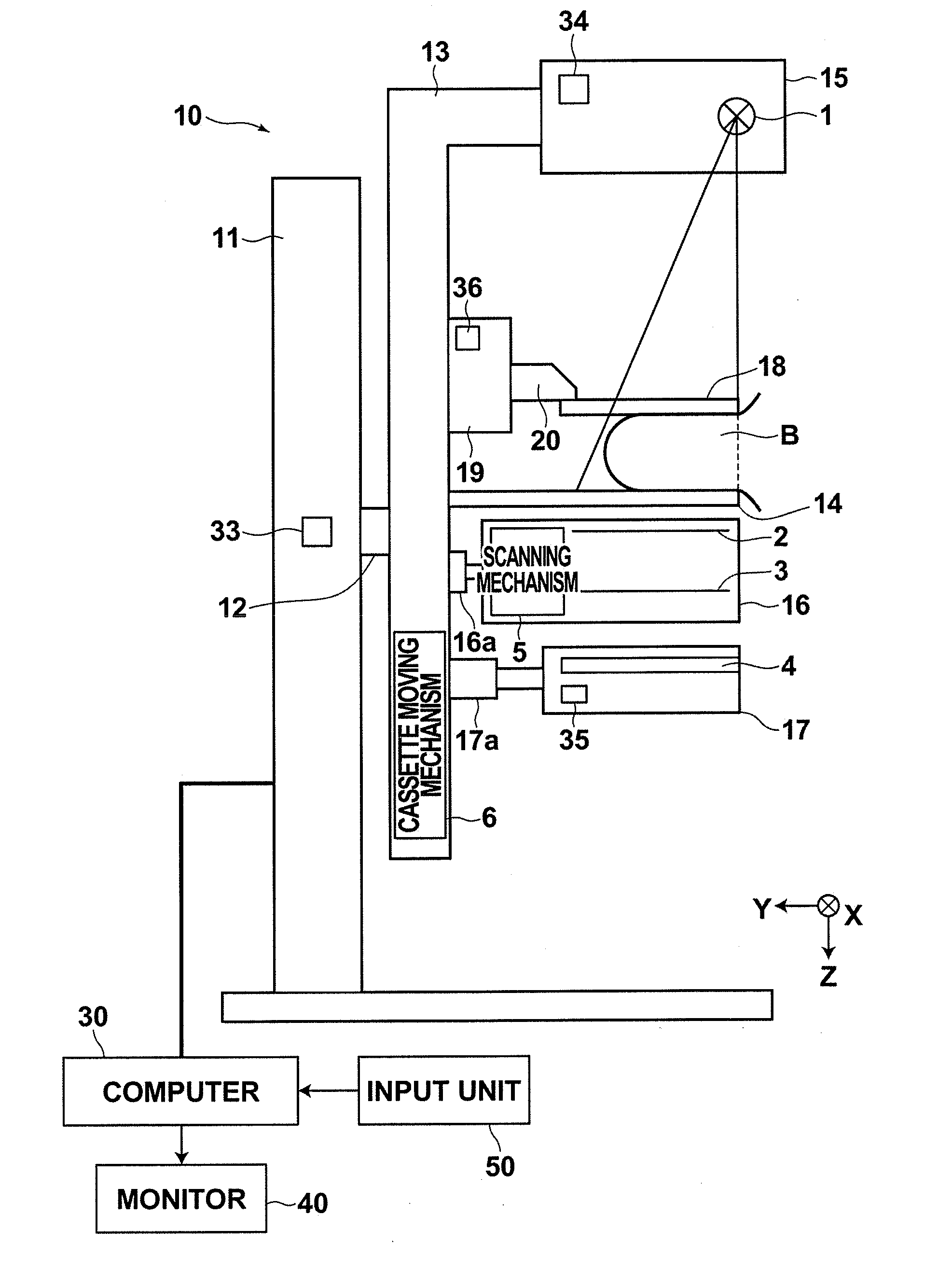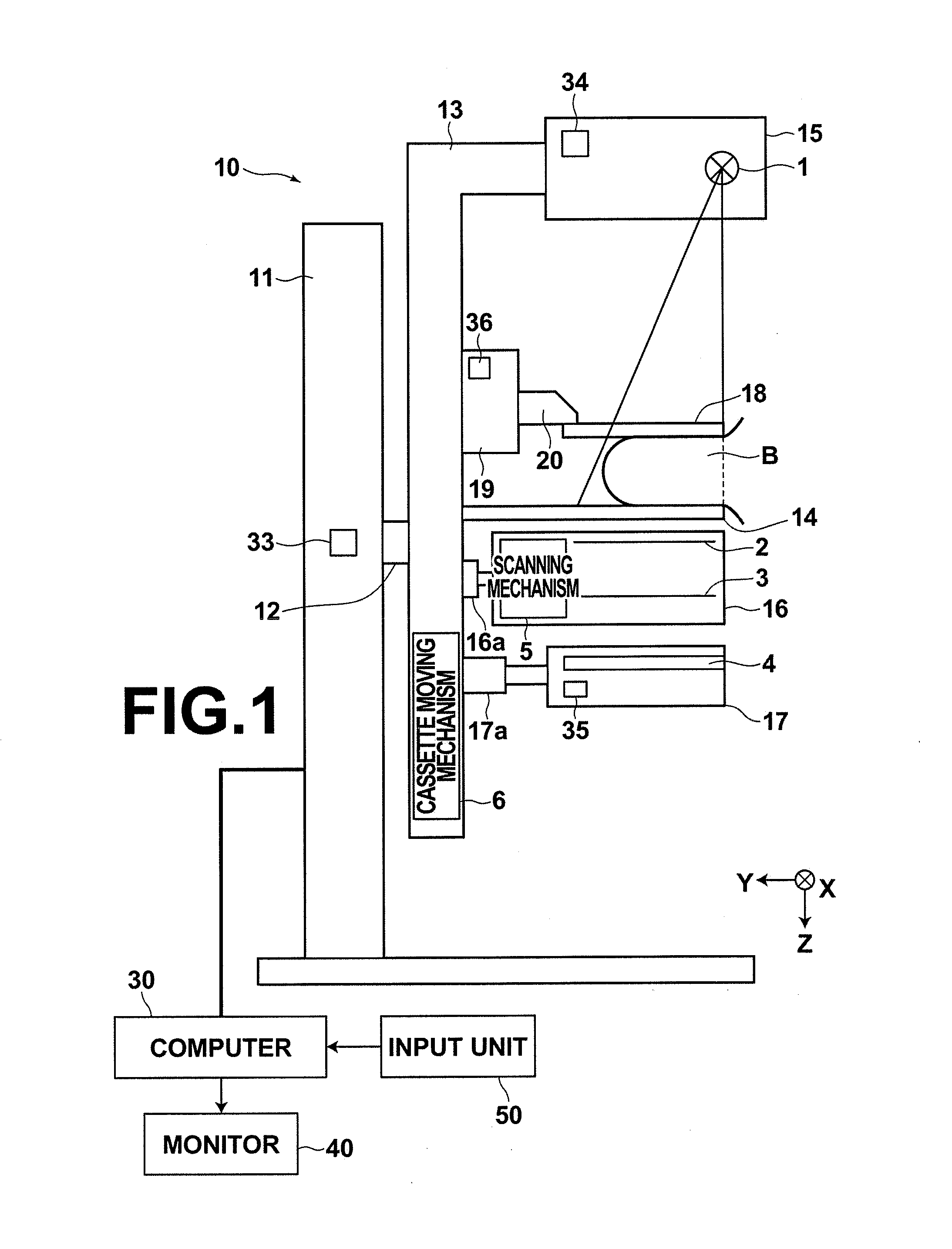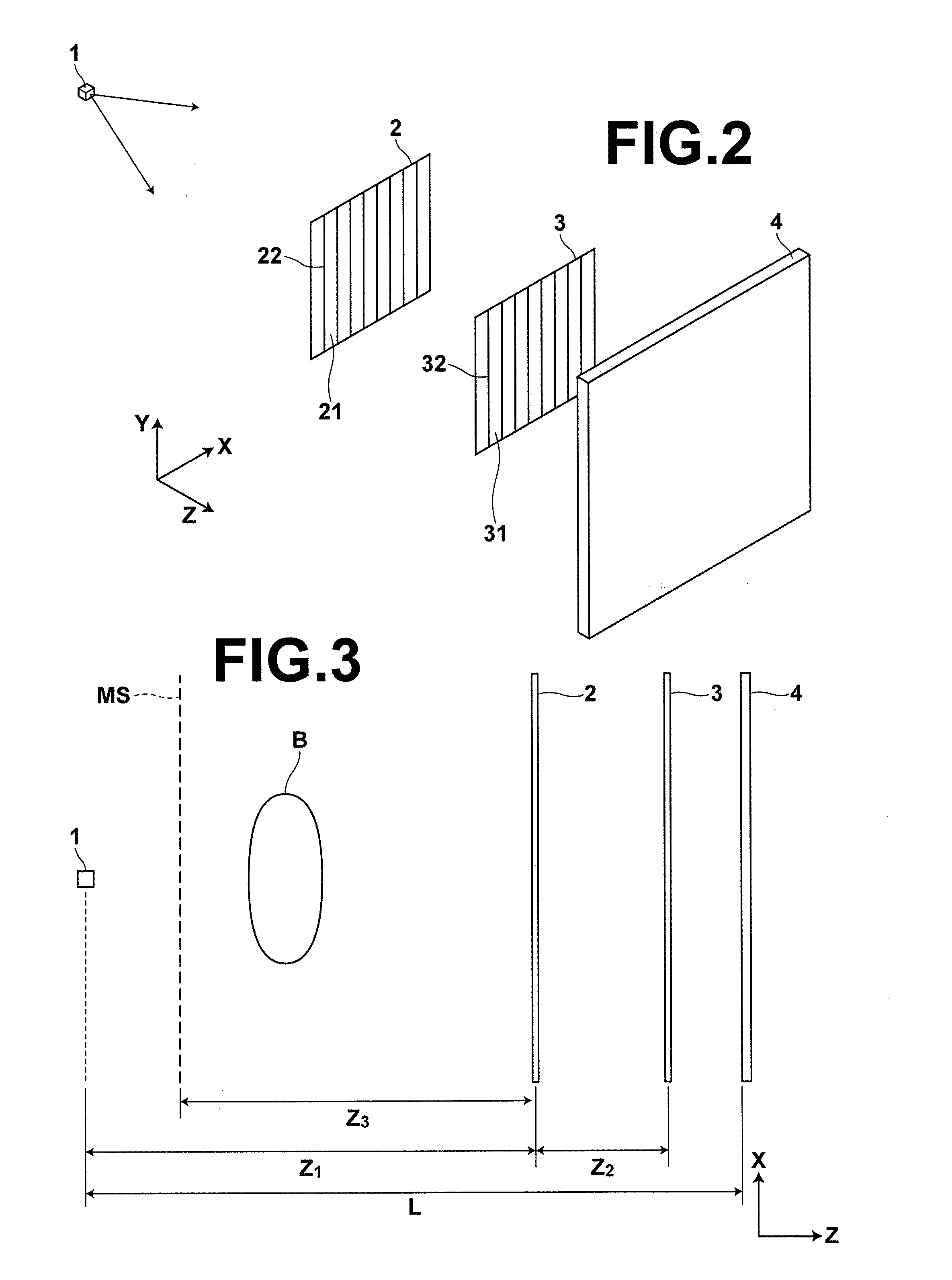Radiation image capturing apparatus and radiation image obtaining method
a radiation image and capturing apparatus technology, applied in the field of radiation image obtaining method and radiation image capturing apparatus, can solve the problems of insufficient contrast as x-ray transmission image, low x-ray absorption power of substances constituted by elements, atomic number, etc., and achieve satisfactory phase contrast image, reduce radiation incident on the first and second grid, and satisfactory contrast image
- Summary
- Abstract
- Description
- Claims
- Application Information
AI Technical Summary
Benefits of technology
Problems solved by technology
Method used
Image
Examples
second embodiment
[0179]Computer 30 of the second embodiment includes grid position control unit 60b and grid information obtaining unit 63, as illustrated in FIG. 17.
[0180]Grid position control unit 60b causes grid moving mechanism 7 provided in arm 13 to move grid unit 16 in X-Y directions by outputting a control signal to grid moving mechanism 7 based on grid information obtained by grid information obtaining unit 63. More specifically, grid position control unit 60b includes therein a preset table that relates grid information to movement amounts of grid unit 16 in X-Y directions as shown in FIG. 18. Grid position control unit 60b receives grid information, refers to the table based on the received grid information to obtain a movement amount corresponding to the grid information, and outputs a control signal according to the movement amount to grid moving mechanism 7. Note that the movement amounts are those of grid unit 16 from a predetermined default position thereof.
[0181]In the present embod...
first embodiment
[0191]Then, after the position of grid unit 16 is adjusted in the manner as described above, a phase contrast image capturing operation is initiated (S38, S40). The operation for capturing the phase contrast image is identical to that of the first embodiment described above.
[0192]In the breast image capturing and display system of the first embodiment, the cassette unit 17 is configured to be movable and in the breast image capturing and display system of the second embodiment, the grid unit 16 is configured to be movable. But an arrangement may be adopted in which both the cassette unit 17 and grid unit 16 are configured to be movable. In this case, the cassette unit 17 and grid unit 16 may be move relative to each other such that radiation transmitted through first grid 2 and second grid 3 in grid unit 16 is incident on the center of radiation image detector 4 in cassette unit 17.
[0193]Further, in breast image capturing apparatus 10 of the breast image capturing and display system...
PUM
 Login to View More
Login to View More Abstract
Description
Claims
Application Information
 Login to View More
Login to View More - R&D
- Intellectual Property
- Life Sciences
- Materials
- Tech Scout
- Unparalleled Data Quality
- Higher Quality Content
- 60% Fewer Hallucinations
Browse by: Latest US Patents, China's latest patents, Technical Efficacy Thesaurus, Application Domain, Technology Topic, Popular Technical Reports.
© 2025 PatSnap. All rights reserved.Legal|Privacy policy|Modern Slavery Act Transparency Statement|Sitemap|About US| Contact US: help@patsnap.com



